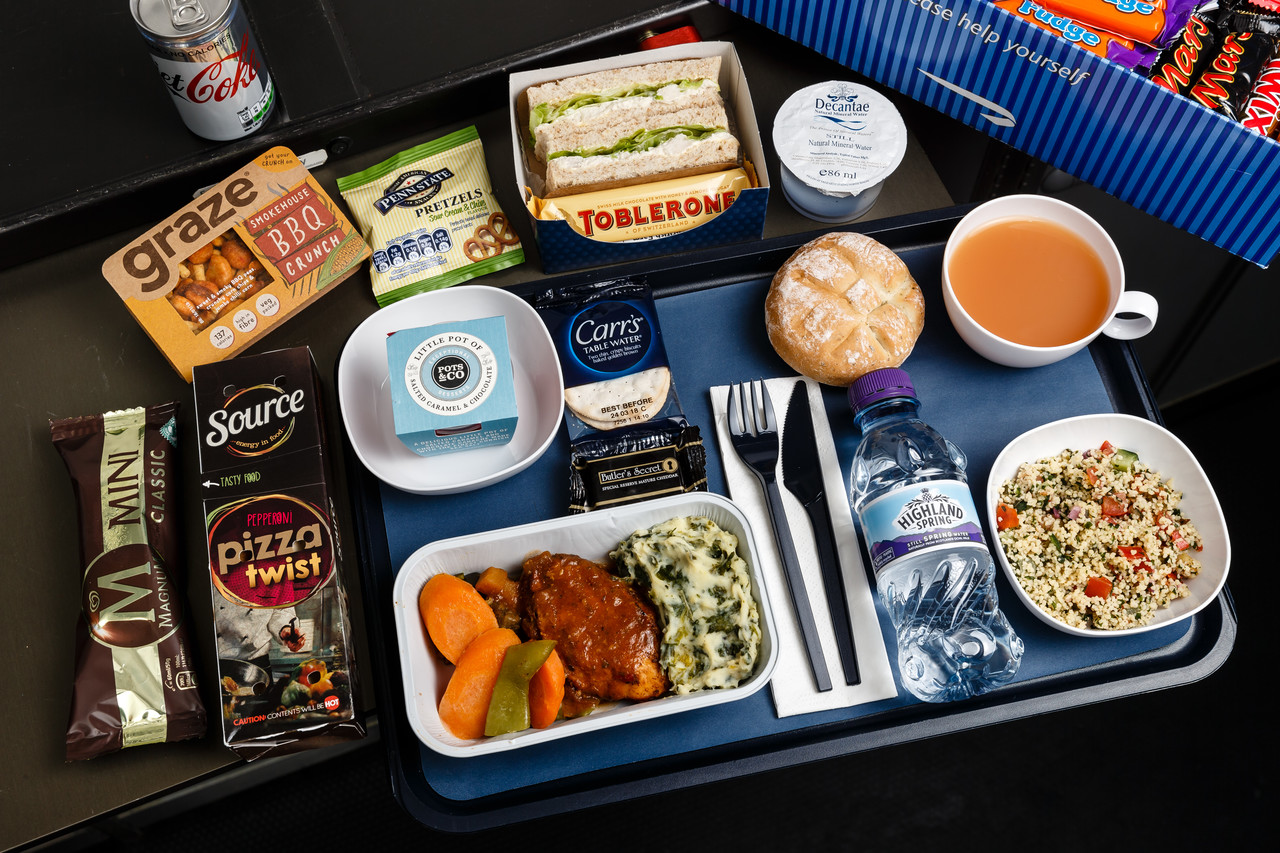
Any flight attendant can tell you that airlines have a nasty habit of producing horrendous amounts of waste. Yet as the public and wider business community start to turn the tide on single-use plastics and unnecessary waste, airlines are seemingly only just realising the destructive nature of the huge amounts of rubbish they create.
According to figures from the International Air Transport Association (IATA), an industry trade body whose members account for 82% of global air traffic, airlines generated around 5.2 million tonnes of rubbish in 2016 alone. IATA’s own figures suggest that if drastic action isn’t taken, that figure will double in the next 15-years.
Many airlines fill their planes with disposable, single-use products which are thrown out after every flight – often into landfill. As Matt Rance, the chief executive of MNH Sustainable Cabin Services told the Guardian last year: “It’s almost like taking a tube, tipping it upside down, emptying it out and then saying ‘right, fill it up with new stuff again’.”
The aviation industry is thankfully starting to take action but progress has been slow – often, initiatives have been hampered by draconian rules about how waste from international flights is handled. In the European Union, for example, all food (and anything that might have been touched by food) is considered high risk and must either be incinerated or sent to landfill.
It’s an issue that is replicated in many regions of the world. Air New Zealand has been working with the New Zealand government to reassess whether everything coming off a plane has to be considered “high risk”. The project has already seen 40 in-flight products reclassified so that they can be reused on future flights.
Since the programme started last year, Air New Zealand says around nine million items have already been recovered and reused rather than disposed of.
Some airlines, meanwhile, are exploring ways of turning the disposal and incineration process into a benefit – British Airways has partnered with Velocys, a renewable fuels company, to develop waste incineration plants that can produce renewable fuels to power its fleet of aircraft. The airline says its part of its commitment to halve net emissions by 2050.
Dutch airline, KLM, however, has already managed to reduce the amount of waste the carrier produces by 32% since it launched a major initiative in 2011. KLM wants to increase that figure to 50% by 2025 – focusing on creating specific waste flows in order to recycle as much waste as possible.

“We still have to waste a lot because we have to burn all intercontinental waste and more than half of European waste,” Egbert Rietveld from KLM Catering Services told RGN.
Rietveld said the airline was actively working on ways around this problem but unsurprisingly, it was proving to be a “slow” process.
The airline, however, is relying on “close co-operation with cabin crew” to help sort and correctly store recyclable waste so that it can be diverted from landfill. In that case, they could probably make use of a Crystal Cabin Award-winning idea from industry giant, Airbus called Retrolley.
The Retrolley is the next-generation of ‘gash cart’ which allows cabin crew to separate recyclable and non-recyclable waste as they collect it and then compress it to reduce overall volume by around 30%.
First developed by students from the University of São Paulo, the Retrolley comes with “three customizable modules, one to stack plastic cups, one to collect liquids and one to crush and store aluminum cans.” And the best bit – it takes up no more room or weight than a standard gash cart.

Commentators on frequent flyer community, FlyerTalk have recently been pondering whether airlines should be focusing on reducing waste rather than just simply trying to recycle single-use plastics and other waste.
Lufthansa, recently decided to ditch the plastic wrap from its in-flight Business Class blankets – instead opting to use a paper banderole as part of its attempts to reduce the use of plastic onboard its long-haul flights.
Meanwhile, low-cost airline Ryanair has announced an ambitious plan to be completely rid its planes of single-use plastic free by 2023. The airline plans to introduce wooden cutlery, bio-degradable cups and sustainable paper packaging as part of its efforts to reduce its environmental footprint.
Whether through education or government action – such as charging consumers for single-use plastic bags or a recent law in Seattle which bans plastic cutlery – travellers are becoming much more aware of plastic pollution. Airlines trying to reduce in-flight waste could be doing so for many reasons but failing to accelerate these initiatives could prove to be a real PR-disaster.
Mateusz Maszczynski honed his skills as an international flight attendant at the most prominent airline in the Middle East and has been flying ever since... most recently for a well known European airline. Matt is passionate about the aviation industry and has become an expert in passenger experience and human-centric stories. Always keeping an ear close to the ground, Matt's industry insights, analysis and news coverage is frequently relied upon by some of the biggest names in journalism.







